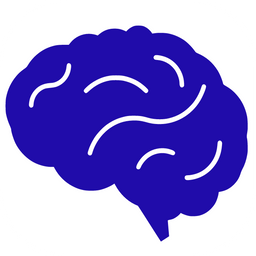KIS Summary:
- Think about the purpose and audience for your essay, and make sure you address them in your essay.
- Guide on how to best structure your essay so that you convey your arguments in a clear and concise manner.
⭐️ Why Parents & Students Love KIS Tutoring
Writing essays can definitely be a challenge, but essay-writing is a very important skill to master. While essays can take many forms (depending on the subject, content and audience), we are here to offer a solid framework that will help you get one step closer to writing that perfect essay.
Table of Content:
Think about your Purpose and Audience
A good essay should always aim to persuade the reader (or marker) of a certain argument. This argument should directly respond to the question you have been given. So, always start by considering these two questions:
- What is the purpose of my essay?
- This will likely relate to the key directive verb that the question contains. For example, are you discussing (providing points for and against) or are you evaluating (making a judgement based on some criteria)?
- Who is my audience?
- Thinking about who is reading your essay is another important consideration. Make sure you always follow the assumption that your audience knows less than more.
- It is much better to spend some time going over the basics (I'm talking key definitions that might seem so obvious), rather than omitting fundamental information. Skipping the basics will detract from your later argument regardless of how sophisticated it might be.
How should I structure my Essay?
Your essay must follow a clear and logical structure that supports your argument.
Even if your evidence might be lacking, structure will get you a long way in ensuring your argument is easy to follow. Some subjects and topics will require slightly different structures. We recommend that you discuss those nuances with one of our private tutors here at KIS Academics.

In the mean time, the following structure should provide a solid start:
1. Introduction
Your introduction is the first thing that your audience reads so you really want to be making a good first impression on your reader. Use the introduction as an opportunity to bring your initial thoughts together in a succinct way, and then provide a roadmap of where you are headed with the rest of your essay.
Your first sentence or two should not just repeat or rephrase the question. Open with a hook, or a short introduction of the topic area.
Then, answer the question with your thesis statement. The directive verb in the question should guide how you respond here. For example, if you are evaluating a statement, you might indicate the extent to which that statement is true and set out the criteria you will be using to reach that argument.
Then, use the next few sentences to provide a roadmap of the points you will be addressing in your essay.
Finally, finish with a sentence that reinforces your thesis (a clear link back to the question).
2. Body
The body of your essay consists of paragraphs, each a building block in the construction of your argument. You want to use the body of your essay to answer the question through added detail and sophisticated reasoning of related evidence. Take it as an opportunity to show your knowledge of the prescribed materials.
The content and amount of body paragraphs is in your hands, but generally 3-4 paragraphs (each dedicated to a new idea/ point) will allow you to develop your argument with sufficient detail.
You may be familiar with PEEL (point, evidence, explanation, link) or PETAL (point, evidence, technique, analysis, link) paragraphs. PEEL paragraphs can apply to a range of subjects, whilst PETAL paragraphs are more directed to English responses. Regardless, they provide a solid framework to structure your body paragraphs, ensuring that your content (point and evidence) relates directly to the question to strengthen your thesis/ argument.
P: Each paragraph should start with a point - a topic sentence that outlines the main idea of that paragraph and drives your argument to a strong conclusion. Then use supporting sentences to explain and develop that point.
E: include specific evidence from your reading or another related example that supports your point. For example, the evidence might be a quote or broader stylistic feature of your English text. Or, for economics it might be a statistic from a reputable online source.
E: explain and analyse the implication or significance of that evidence in relation to your point as well as the broader thesis. For example, why has the author used that technique to portray a certain idea?
I strongly recommend that you put together a bank of active analysis verbs that will bolster your analysis and ensure you are not just describing a text or recounting the plot. Here are a few to get you started:
- strengthen
- assert
- elicit
- characterise
- imply
- validate
- underline
- allude
- emphasise
- perpetuate
L: always link that evidence back to your point, your thesis and finally the question!
3. Conclusion
Your conclusion should not just be a repeat of the introduction.
While your introduction moves from broad to specific, your conclusion should move from specific to more broad. Never introduce new content or ideas for the conclusion, but you might want to make your essay more thought-provoking by offering some food for thought for the reader (of course, related to what you have already said).
Conclusion
With all this in mind, it is time to get cracking! The earlier you start writing, the better:
- Start with a plan, following the above structure.
- Put together your argument, your points and then your evidence.
- Often it can be easier to start with the body, working on each paragraph and then coming back to the intro and conclusion once you know what you actually want to say.
- Revise your first draft to make sure the essay flows and is structured logically.
- Then come back and edit with a fresh set of eyes!
If you need some additional support, a private tutor from KIS Academics can be very helpful:
For more study tips and resources, check out these KIS Academics articles:



FAQs
How do I start planning my essay?
Analyse the question and come up with a thesis, then craft 3 points, and perhaps one opposing viewpoint, and a last point that counters that opposing viewpoint. Then think of evidences that help prove your points.
The essay plan can be in bullet points, but make sure you have your body paragraphs. If you need someone to review your essay plan, you can ask a friend to read through it, or use an assignment marking service like KIS Academics'.
Where can I find more guidance to help me?
- Your teacher
- Your peers
- A tutor
- Online resources
What are literary devices?
Literary devices are stylistic tools that authors use to convey certain messages, evoke emotions in readers, or just enhance their writing. You can find a list of literary devices here, and see how you can use them in your essays!
What else should I take note of when writing my essay?
The most important thing is to ensure you've answered the question. It doesn't matter how good your essay is if you did not answer the question. So always read you essay and make sure you've hit that criteria.
The next thing is to ensure that you've used sufficient evidence to prove your points. You cannot make a claim and not back it up, that is how you get penalised
Finally, especially for English essays, take note of your spelling and grammar.
Want more personalized study guidance to help drastically improve your marks? A private tutor from KIS Academics can make the biggest difference!







